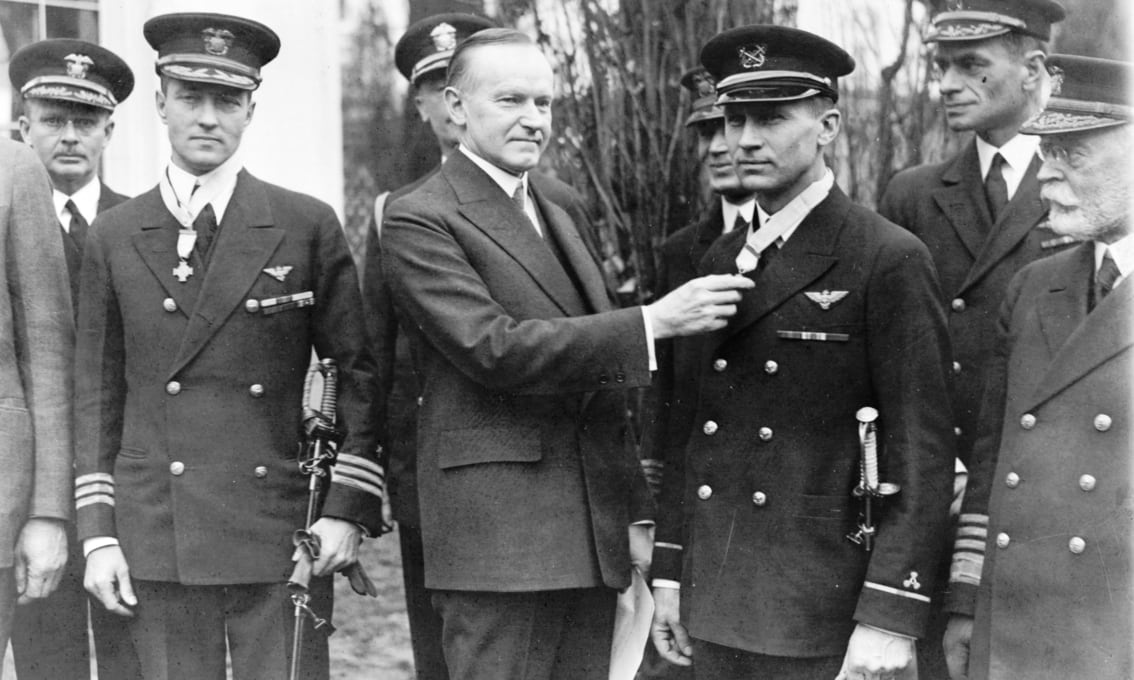Icy winds swept across Spitsbergen, an island group on the Arctic Circle north of Norway.
In May of 1926, Spitsbergen’s barren, frozen landscape erupted with activity as two international expeditions struggled to become the first to fly over the North Pole.
Famed Norwegian explorer Roald Amundsen, teaming with American adventurer Lincoln Ellsworth and a mixed Italian and Norwegian crew, planned on flying an Italian-built dirigible, Norge.
At the same time, an American party commanded by Richard E. Byrd was about to attempt the flight in a tri-motor ski-plane.
Exploring the Arctic by air was not exactly a new idea in 1926.
Thomas Jefferson, after seeing a hot-air balloon flight in the late 18th century, predicted that man could search the polar regions by air.
In 1897, Swedish balloonist Saloman Andrée perished in an attempt to fly across the North Pole.
Another abortive quest was made in 1909 by American Walter Wellman in a dirigible.
A 1925 expedition by Amundsen and Ellsworth, using Dornier-Wal twin-engine flying boats, nearly ended in disaster barely 160 miles from their goal.
While Amundsen and Ellsworth prepared for a new polar journey in the spring of 1926, a 37-year-old retired American naval officer, Richard Evelyn Byrd, was convinced he would be the first man to fly over the North Pole.
He had already gained some Arctic flight experience by being the first to fly over the great icecap that covered much of Greenland. Byrd understood that planning and preparation could somewhat offset the multitude of dangers at the top of the world.
“The easiest way a man can make a monkey of himself,” he told a journalist, “is to take up Arctic explorational work by airplane.”
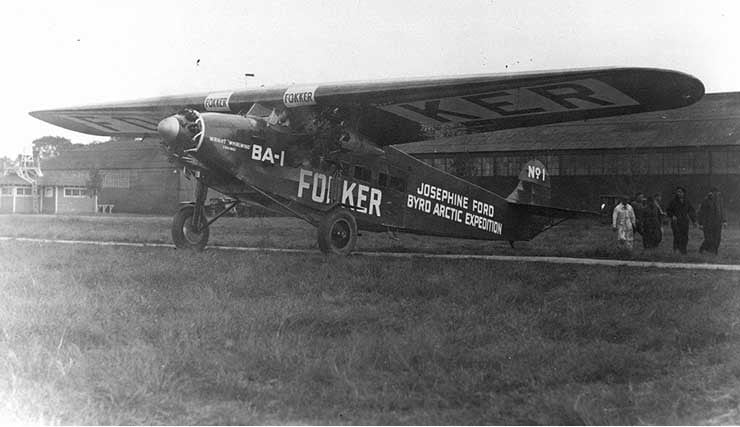
Among the dangers Byrd had to contend with were powerful Arctic winds that could easily throw a plane off course. Navigating from the air was also hazardous, since the dazzling white of ice and snow or the Arctic fog made the land seem horizonless against the sky.
Landing to take bearings meant setting a craft down on unknown terrain — or no terrain at all, but treacherously deceptive sea ice.
Standard compasses functioned erratically in the Arctic. Sub-zero temperatures played havoc with engines. Any expedition forced down faced a perilous trek across ice fields.
Born in 1888, Richard Byrd had already distinguished himself as an adventurer and flier. As a youth, he had journeyed around the world and had ridden out a typhoon in the China Sea.
While in the Philippines, he came face to face with bandits armed “with bolos in their hands heavy enough to cut through a body twice as big as mine,” he later noted. Byrd galloped to safety, completely forgetting the pistol at his belt.
A product of the U.S. Naval Academy, he was twice commended for saving drowning men while serving in the Caribbean.
By late 1925, Byrd had begun collecting gear for his proposed polar expedition. Since such a private endeavor was expensive, he sought help from financiers and business magnates Edsel Ford, John D. Rockefeller, Jr., Vincent Astor and Rodman Wanamaker, among others.
The U.S. Shipping Board agreed to lease him the 3,800-ton steamer Chantier, a relic of World War I that had been scheduled for sale at auction. Byrd had to pay $1 per month for the vessel.
He also assembled a crew of volunteers–expert mechanics, seamen, engineers, radio operators or aviators, plus nontechnical workingmen.
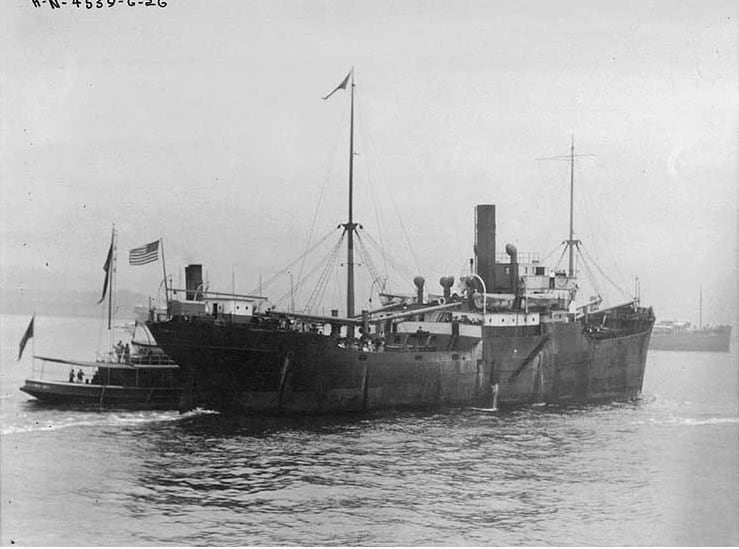
Byrd chose a Fokker Tri-Motor, an American-built version of the Dutch Fokker F.VIII-3M, as the plane for his polar flight.
Christened Josephine Ford in honor of backer Edsel Ford’s daughter, the plane was 42 feet 2 inches long with a wing spread of 63 feet 4 inches.
Three powerful Wright Whirlwind J4 air-cooled engines producing 200 horsepower each were capable of pulling the aircraft at a high speed of 122 miles per hour.
Centered in each wing was a gasoline tank with 100-gallon capacity, while two other tanks in the cabin held 110 gallons each.
At cruising speed, fuel consumption was about 28 gallons per hour.
Josephine Ford had already logged more than 15,000 miles before being purchased by Byrd, and had a virtually trouble-free track record.
The air-cooled engines were relatively lightweight, an important factor when trying to take off with crew and gear from an icy landing strip. Since the engines were air-cooled, there was no danger of water freezing in the radiator.
Specially constructed ski apparatus, fitted with shock absorbers, acted as the landing gear.
The enclosed cockpit had dual controls, enabling either aviator to fly the plane.
Byrd also chose a small Curtiss Oriole two-seater christened Richard the Third after his own son.
The bright yellow-and-orange Curtiss would serve as a scout and photography plane, and could come to the aid of the Fokker if it was forced down.
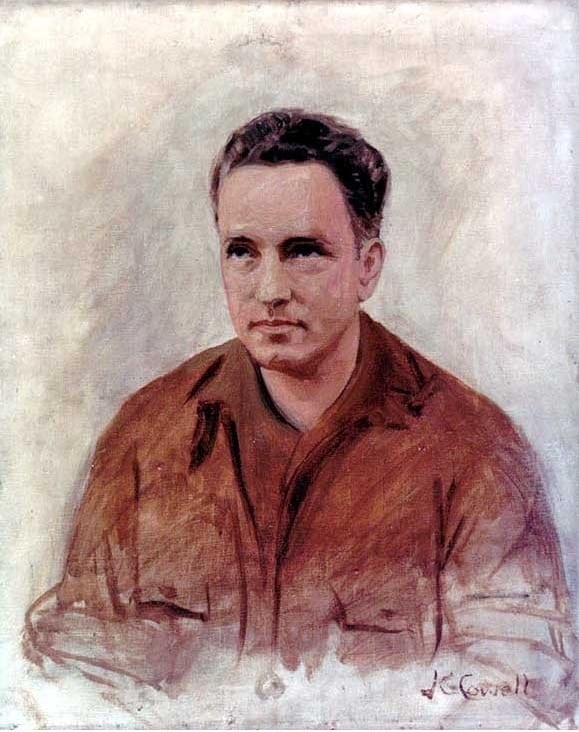
Loaded with 52 men, two planes, survival gear, enough rations to last six months and coal to travel 15,000 miles, Chantier steamed out of New York Harbor on April 5, 1926.
Richard Byrd had chosen King’s Bay in the Spitsbergen Islands as his takeoff point.
Warmed by the Gulf Stream, Spitsbergen was only some 700 miles from the North Pole, nearly 500 miles closer than the northernmost point of Alaska.
“We could reach it in the spring and take advantage of the best Arctic weather and the leveling and smoothing effect both on the land and the ice of the great snow sheet that covers everything,” Byrd noted.
At 4 p.m. on April 29, with the temperature hovering around zero degrees Fahrenheit, Chantier eased into the ice-choked harbor of King’s Bay.
What surprised the Americans was that Amundsen and Ellsworth had arrived earlier and had nearly completed their own preparations for a polar flight, simply awaiting the arrival of the dirigible Norge from Italy.
Although neither Amundsen nor Byrd would admit it, it appeared as if a race to the North Pole was about to start.
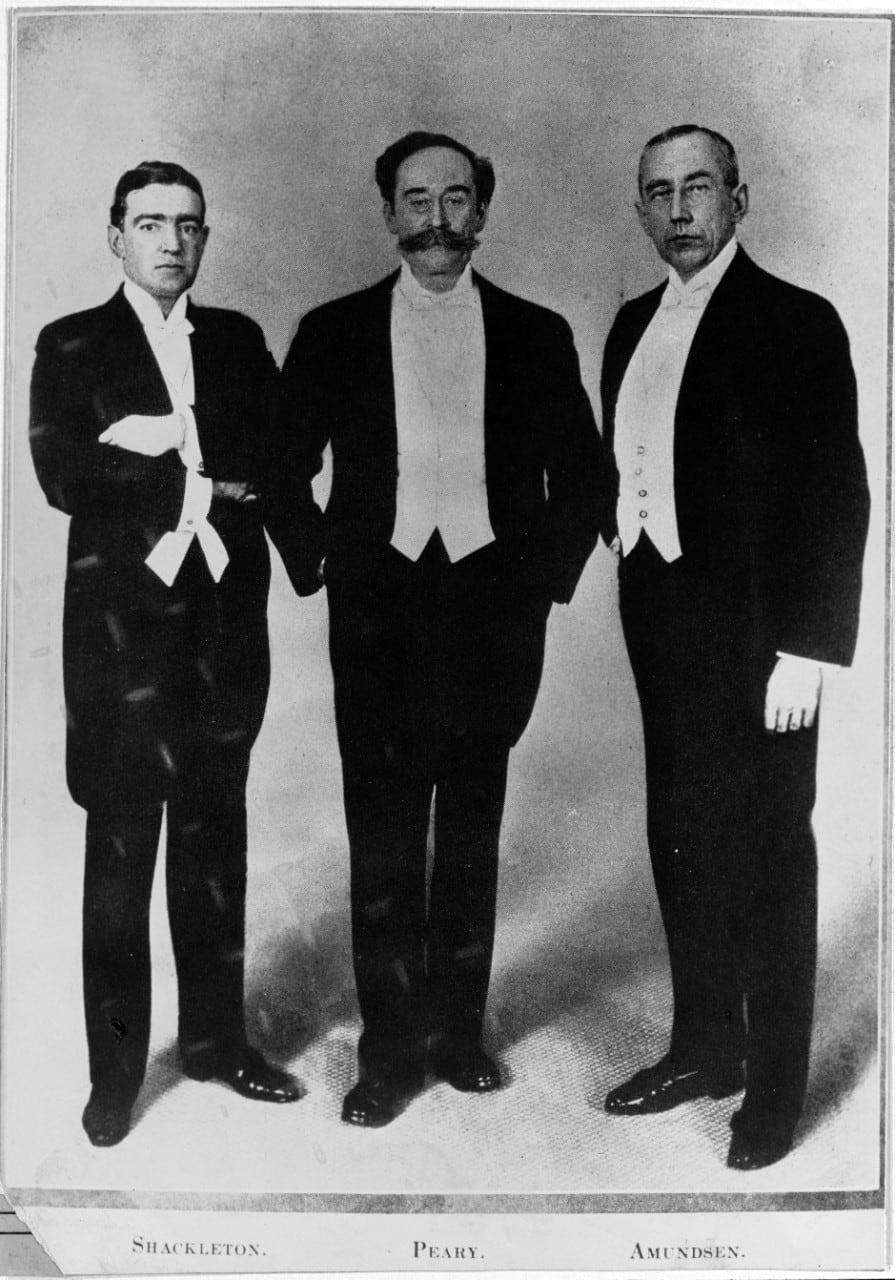
Byrd immediately ran into difficulties. Moored to the only wharf in King’s Bay was the Norwegian gunboat Heimdal, which was loading coal and was unable to move.
With ice caking the harbor, Byrd had to act fast.
Chantier was maneuvered to within 300 yards of shore and anchored. Whaleboats were quickly lowered and covered with heavy planks to form a large, cumbersome raft.
Alarmed at what the Americans were attempting, Amundsen sent a brief note to Byrd: “You know nothing about ice or you would not attempt such a thing. The ice is almost certain to start moving before you can get ashore.”
As if on cue, snow squalls swept the harbor and a change in tide began to push ice blocks into the lane Chantier had opened.
Undeterred, Byrd’s volunteers struggled to winch the airplanes to the makeshift raft.
On one occasion, just as the wings were about to be lowered and fitted to the fuselage of Josephine Ford, a vicious wind sprang up and threatened to sweep the wings away. The crew wrestled the wings to the ship’s deck and secured them until calm returned.
The ferrying of supplies and airplanes to shore continued for two days. Byrd’s men, many of whom were inexperienced rowers, constantly fouled one another’s oars. Ice chunks that threatened to crush the raft were fended off with axes and boat hooks.
When Josephine Ford was finally guided to safety, the Norwegians clustered on the wharf responded with a hearty cheer.
A waiting game now ensued as the Norwegians and Americans were both forced to wait for a clearing in the weather before continuing their missions.
For Amundsen and Ellsworth, the dirigible Norge was socked in at Leningrad waiting for a break in the storm to fly the last leg to Spitsbergen.
To underscore his feeling that there was no race to the Pole, Amundsen supplied the Americans with snowshoes and a sled to make their work easier.
Byrd’s party, in the meantime, labored at clearing a skiway in the snow and ice, and in treating instruments with graphite rather than grease to keep them from freezing.
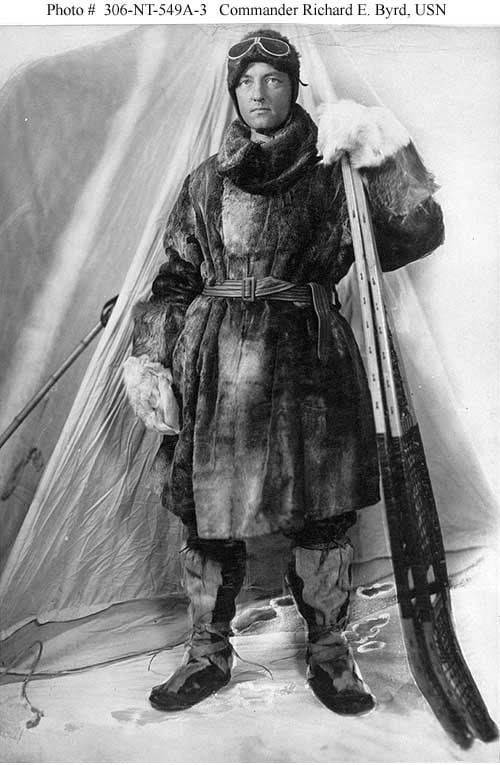
On May 2, the weather finally began to clear. Byrd’s men raced to prepare Josephine Ford for a trial flight. In the Land of the Midnight Sun, there was daylight for 24 hours, allowing around-the-clock work.
On the morning of May 4, the Fokker Tri-Motor, with Navy aviation pilot-mechanic Floyd Bennett at the controls, gathered speed as it taxied down the skiway chiseled through snow and ice.
At the last moment, the left ski stuck to the surface as Byrd tried to make a right turn, and the plane swerved off the path and into a snowbank.
Though the engines were undamaged, the center propeller was out of line, one ski had been smashed and a landing strut broken.
To strengthen the ski, oars from the whaleboats were cut apart and fitted to act as braces.
Norwegian Bernt Balchen, who was later to gain fame piloting for Byrd, suggested to Byrd that the skis be waxed with a mixture of paraffin and resin to reduce friction.
Norge, in the meantime, had lifted off from Leningrad and was en route to King’s Bay at a cruising speed of 50 mph. Amundsen’s crew put the finishing touches on an open-roofed hangar and mooring mast for the 348-foot airship.
On May 5, Bennett once more opened the throttle as a repaired Josephine Ford sped down a repacked skiway, which angled slightly downhill.
This time the Fokker climbed into the air. Bennett and his copilot, U.S. Marine Lt. A.N. Parker, cruised for two hours, testing both plane and equipment. When they returned, Byrd discovered that less fuel had been used than anticipated. He was about to change his flying strategy.
Byrd’s original plan was to schedule a landing at Cape Morris Jessup in northern Greenland, the ‘northernmost known point of land in the world.’
After establishing a camp at the Cape, he could refuel and continue on his flight. But now, with the savings in fuel consumption demonstrated by the Fokker, the idea of a halfway station could be eliminated, "especially since landing with skis in strange areas meant taking big risks."
Byrd decided the trip to the North Pole and back could be made nonstop.
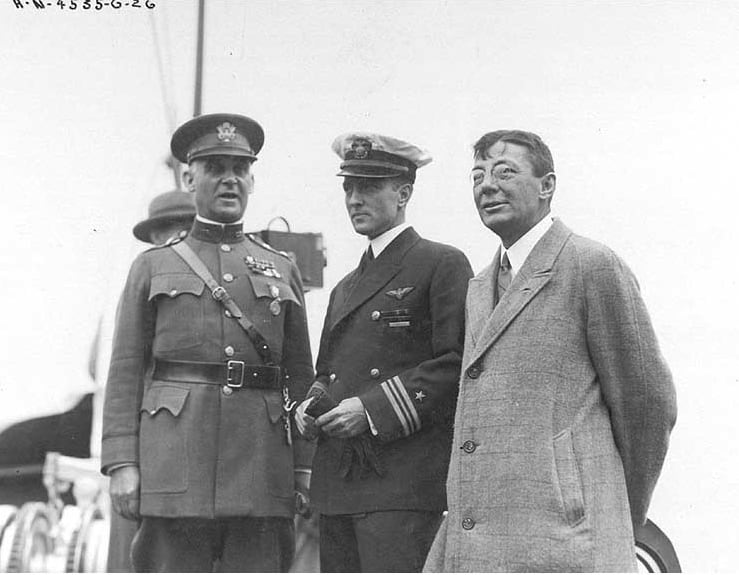
King’s Bay was vibrant with excitement on May 7 as a long, cigar-shaped silhouette appeared over the hills to the south. Bathed in the eerie light of early morning, Norge had finally arrived to the delight of Amundsen and Ellsworth.
Upon learning that Byrd was nearly ready to fly, Norge‘s Italian pilot, Umberto Nobile, declared that he could be ready in six hours to beat the Americans to the Pole.
But the dour Amundsen was not about to be rushed — even if Byrd was ready.
That night, the American crew began the 14-hour task of loading and preparing Josephine Ford for its journey.
Byrd had to consider the very real possibility of being forced down by engine malfunction or some other mishap, as had happened to Amundsen and Ellsworth the previous year.
Stowed in the fuselage was a sled for carrying survival supplies, including food for 10 weeks in case they were forced down. The highly concentrated diet of emergency rations consisted of pemmican (a mixture of dried meat, fat, sugar and raisins), chocolate, pilot bread, tea, malted milk, powdered chocolate, butter, sugar and cream cheese.
Two rubber rafts for crossing openings, or leads, in the ice were also stored.
Personal equipment included “reindeer-skin, polar bear and seal fur clothes, boots and gloves,” wrote Byrd, “primus stove, rifle, pistol, shotgun and ammunition.”
There was also a tent, axes, knives, smoke bombs and a shortwave radio set.
Byrd’s meteorologist, W.C. Haines, declared that the weather on May 8 would be near perfect for flying.
The Wright engines of the Fokker had already been heated by three small gasoline stoves whose heat was channeled to the engines by tubes of fireproof canvas.
Extra five-gallon cans of fuel were hurriedly stored in the plane’s cabin as Byrd and Bennett climbed aboard.
Once more Josephine Ford gathered speed as it bounced over snow hummocks on the skiway. Unable to take off, the plane slid past the end of the strip and plunged into a snow drift.
The Fokker was too heavily packed to take off.
Fortunately, neither of the aviators was hurt, nor were the engines or the fragile skis damaged.
“We took off hundreds of pounds of fuel to lighten the load, dug out of the snowdrift and taxied the Josephine Ford up the hill to try again,” Byrd wrote later.
Floyd Bennett claimed they removed 1,000 pounds.

The members of the American expedition held an emergency council. They determined that the Fokker could make the trip to the Pole with slightly less fuel than expected, so some of the gasoline was removed to lighten the load.
Every bit of nonessential gear was also removed from the fuselage.
Since spring was coming to the Arctic, the icy nature of the skiway had become slushy, acting as a drag on the skis. The next attempt would have to be made as near to midnight as possible “when the night’s cold wind would make the snow harder and therefore easier to take off from,” Byrd reasoned.
At approximately a half-hour past midnight on May 9, Byrd and Bennett once more clambered into the cockpits of the Fokker.
Neither man had slept for nearly 36 hours, but both were too excited to rest.
The skiway was iced in front of the skis to make a quicker start. A rope was tied to the rear ski and secured to a stake in the ground, holding the plane until all three engines were at full power, and then the rope was cut to allow the takeoff run.
With engines revving to full power, the Josephine Ford lumbered down the skiway and slowly crept into the still air.
Using dead reckoning off the landmarks on Spitsbergen to establish their exact location, the pair soon climbed to 2,000 feet.
As they sped northward, they were surprised at how near the polar ice pack was to land.
Byrd recalled the deaths of earlier Arctic explorers and the difficulties encountered by Adm. Robert E. Peary on his dog-sled expedition to the North Pole less than two decades before: “It was with a feeling of exhilaration that we felt that for the very first time in history two mites of men could gaze upon her [the Arctic’s] charms, and discover her secrets, out of the reach of those sharp claws.”
During the first stages of the flight, Bennett acted as pilot for 40 minutes per hour, while between his 20-minute shift at the controls Byrd focused on the difficult task of navigating the polar regions.
Accuracy was the key to success, for if they miscalculated their exact position, the men would not only miss the North Pole but would also be dangerously off course on their return flight home.
The brilliance of the sun beating on the ice gave the illusion that land and sky had merged without a discernible horizon, making the reading of a sextant more difficult.
Likewise, a magnetic compass was undependable since no one knew what the magnetic variations might be between the North Pole and Spitsbergen.
Byrd also lacked a gyroscopic compass, although he felt it would not have aided navigation greatly.
What Byrd did rely upon, however, was a special sun compass invented by Albert H. Bumstead, chief cartographer of the National Geographic Society.
The sun compass worked somewhat like an old-fashioned sundial, only in reverse.
With the time of day being known, the shadow of the sun bisects the hand of a 24- hour clock and indicates north. Since exact time was essential, Byrd carried two chronometers. He also used a drift indicator, a device lowered through a trapdoor in the plane to help measure — by indicating sideways motion over ground objects — the wind effects that continually pushed Josephine Ford off course.
As the Fokker passed over the Arctic ice, Byrd and Bennett could see “mountains astern gleaming in the sun at least a hundred miles behind us. That was our last link with civilization,” Byrd wrote. “The unknown lay ahead.”
Documentation of the flight was of prime importance to prove they had indeed flown over the North Pole. To keep his logbook as accurate as possible — and to make sure they stayed on course — Byrd lowered his drift indicator through the trapdoor every three minutes.
Several times he did so without gloves and suffered a mild case of frostbite.
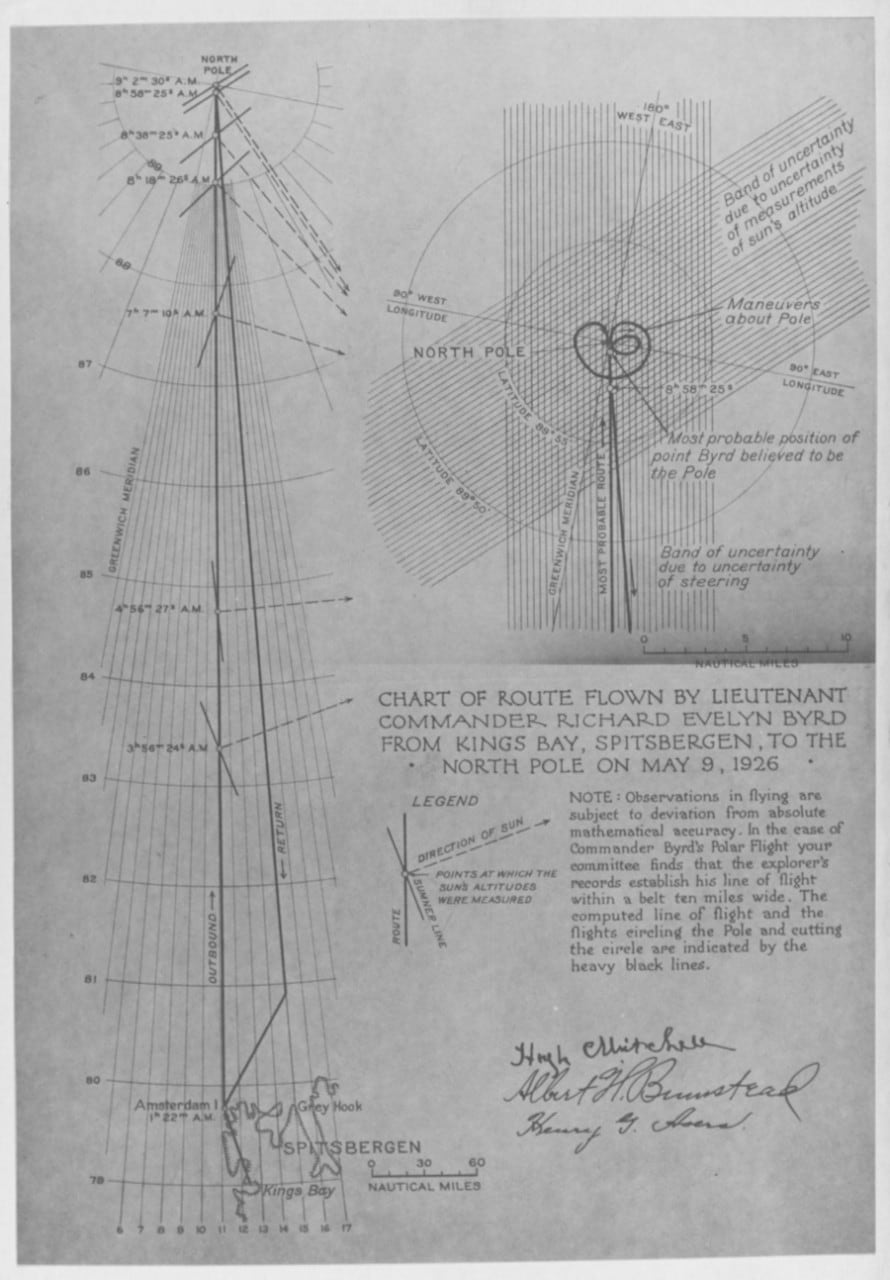
Flying at 90 mph, the craft encountered almost perfect air conditions. The temperature was 8 degrees Fahrenheit, warmer than they had expected. Turbulence was virtually nonexistent. At 2,000 feet, visibility was estimated at 50 miles in all directions.
“The feelings of an explorer had superseded the aviator’s now, and I had that extraordinary exhilaration that comes from looking into virgin territory,” Byrd later recalled.
About an hour’s distance from the Pole, Byrd noticed a leak in the oil tank of the starboard engine. Bennett quickly surveyed the problem and was sure the engine would stop.
He suggested an emergency landing to repair the leak, but Byrd preferred going on with two engines, if necessary, rather than risk an icy landing. They continued to empty the five-gallon cans of fuel into the tanks, then tossed the empty containers out to rid themselves of all excess weight.
With the goal so close at hand, there was no consideration of turning back to Spitsbergen.
After eight hours and 25 minutes in the air, at 9:02 a.m., Josephine Ford passed over the North Pole.
Bennett swung the plane to the right to confirm their position on the sextant, then circled and confirmed it twice more. Of his impressions of that historic moment, Byrd wrote: “We felt no larger than a pinpoint and as lonely as a tomb; as remote and detached as a star.”
Below them stretched ice fields bordered by pressure ridges built into near impassable tangles of overlapping ice cakes.
Separations of ice fields left watery leads “which had been recently frozen over and showing green and greenish-blue against white.”
Bennett continued to circle the North Pole, allowing Byrd to verify again their location and to take photos.
At 9:15 a.m., Josephine Ford turned back toward Spitsbergen. To the aviators’ surprise, the oil leak stopped and the engine did not seize up and quit.
Later they found out that a rivet had pulled loose on the oil tank causing the fluid to dribble out until it went below the rivet’s level. Since there had been plenty of oil in the tank, the loss had not damaged the engine.
Aided by a brisk tailwind, the Fokker reached ground speeds of more than 100 mph.
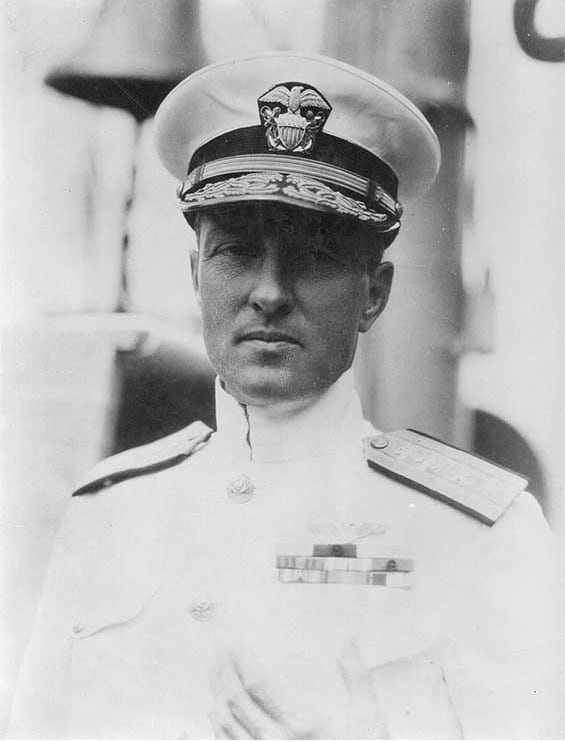
After going for nearly two days without sleep, the steady drone of the engines coupled with the white expanse below caused Bennett and Byrd to doze. When one became too tired, the other took over at the controls.
Their return voyage was right on course as Spitsbergen’s mountains loomed in the distance.
At 4:30 p.m., nearly 16 hours after takeoff, Josephine Ford roared over King’s Bay.
Americans and Norwegians alike tumbled from their quarters as the plane circled. The whistle on Chantier screamed its welcome.
Among the first to reach the Fokker as she skidded to a stop was Roald Amundsen, who tearfully embraced Byrd.
The Norwegian band aboard Heimdal struck up “The Star-Spangled Banner” as cheering men hoisted the two American aviators to their shoulders and paraded them around camp.
After a well-earned sleep, Byrd and Bennett returned to the air.
On May 11, Amundsen and Ellsworth embarked aboard Norge to carry out the second flight over the North Pole.
Their goal was to continue on to Alaska in the world’s first attempt at transpolar flying.
Byrd, who had given the Norwegian one of his sun compasses and Ellsworth his sealskin clothing, flew Josephine Ford several miles as an escort to the dirigible. He then returned to King’s Bay to serve as a rescue team should Norge need one.
The Amundsen-Ellsworth expedition faced a much tougher time in the air than had Byrd and Bennett.
After an uneventful flight to the Pole, which they reached at 1 a.m. on May 12, the explorers pushed on toward Alaska.
Radio messages, which had been sent at regular intervals, suddenly stopped. Fog and snow squalls enveloped Norge as it neared the northern extremities of North America.
Ice caked the radio transmitter antenna and began to form on the propellers. As crewman Umberto Nobile changed altitudes to break free of the fog, chunks of ice flew free from the props and slit holes in the dirigible’s fabric skin.
The 14-man crew was kept busy repairing the holes to protect the gas bags.
Finally, after a flight of more than 59 hours, Norge successfully reached the little village of Teller, Alaska.
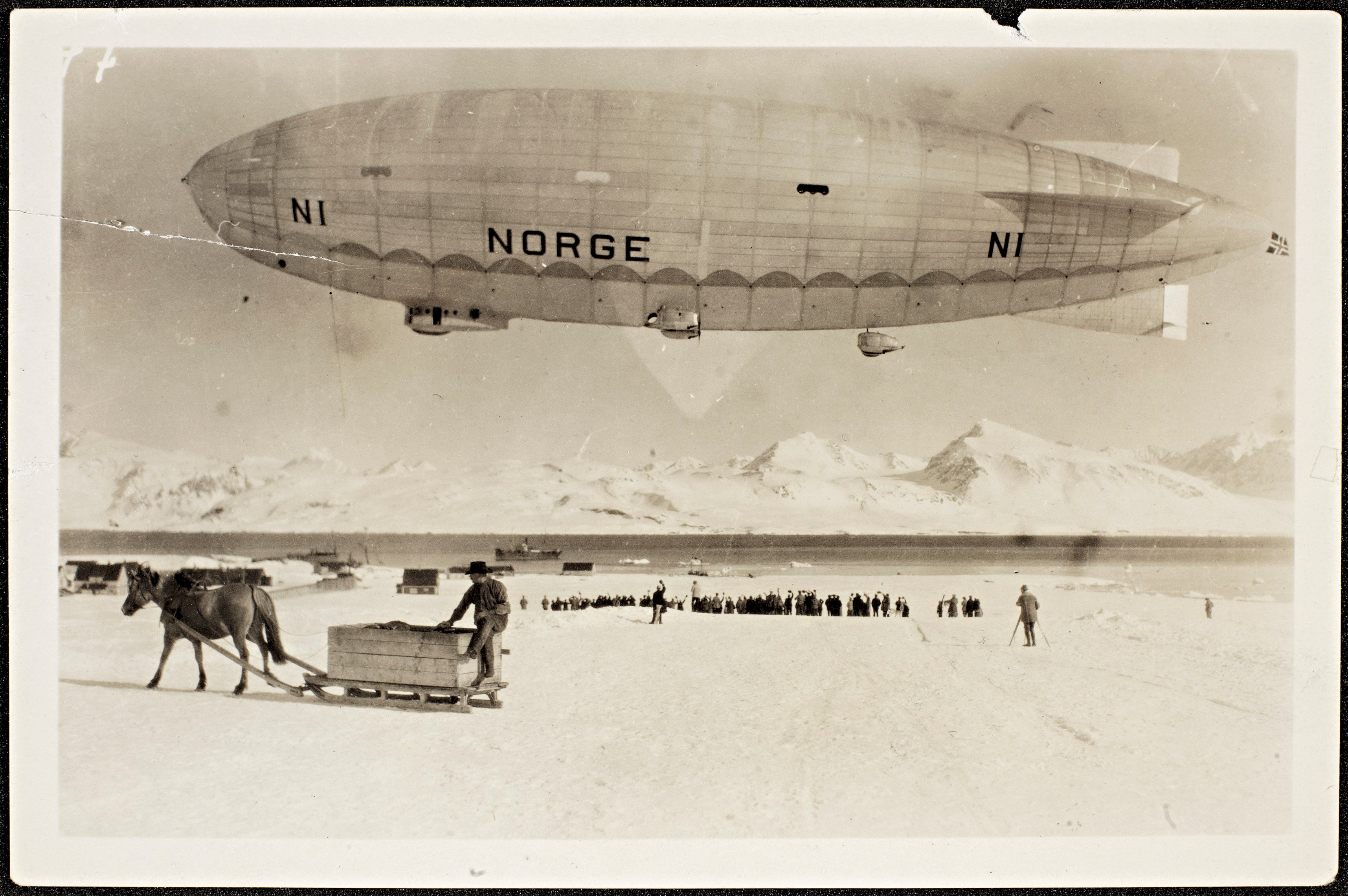
Richard Byrd and his crew boarded Chantier and steamed to London, where they received a hero’s welcome.
On June 23, 1926, the steamer reached New York City, where a ticker tape parade down Broadway awaited the aviators.
In Washington, the U.S. Congress promoted Byrd to commander and Bennett to warrant officer, and awarded both men rare peacetime Medals of Honor.
The National Geographic Society awarded Byrd the coveted Hubbard Gold Medal and Bennett with another gold medal.
Though Floyd Bennett died of pneumonia in 1928, Richard Byrd would remember him in years to come.
In November 1929, the commander became the first man to fly over the South Pole —with Bernt Balchen at the controls — this flight in a Ford Tri-Motor appropriately christened Floyd Bennett.
Byrd and Bennett, the two names that had made history over the North Pole, were together again for the journey south.
Disputes later arose over the legitimacy of Byrd’s North Pole claims. Some experts felt that he could not have flown the distance to the North Pole and back in 16 hours.
They also questioned his recording of a strong tailwind that had aided Josephine Ford back to Spitsbergen.
Byrd’s logbook, records and calculations were hurried to a select panel of scientists at the National Geographic Society. After checking and rechecking the data, the committee confirmed that Richard Byrd and Floyd Bennett had indeed been the first men to fly over the North Pole.
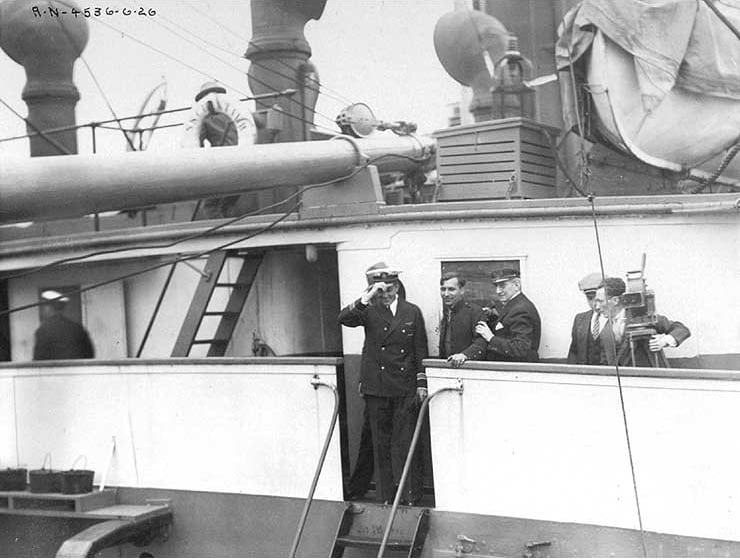
This article originally published in the May 1998 issue of Aviation History, a sister publication of Navy Times. For more great articles, be sure to pick up your copy of Aviation History!
